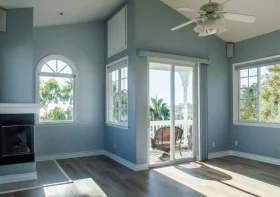Selling Your Home Efficiently: Strategies For Today’s Real Estate Market

Today’s property market is more dynamic than ever, with many sellers facing life changes that require a swift transaction. For example, relocation for a new job, changes in financial health, or the desire to upsize or downsize can all place a premium on finding the right buyer in record time. National housing statistics indicate that as markets tighten, homes in sought-after neighborhoods are receiving multiple offers within days of listing, sometimes even within hours.
However, a listing that lingers risks losing momentum. According to analysts, properties that remain unsold for longer periods may fetch as much as 5% less than their anticipated value. As a result, exploring ways to secure a fast offer in Lakewood or similar quick-offer services gives homeowners an edge in meeting pressing timelines while still achieving their financial goals.
The need for speed can exist in any market, not just urban centers or rapidly growing suburbs. From quiet neighborhoods to bustling city cores, every area has its local market pulse. Tapping into that knowledge—by reviewing days-on-market trends, understanding local demand surges, or even tracking school enrollment periods—helps sellers of all backgrounds position themselves for a faster, more profitable transaction. Ultimately, action guided by research and preparation always has the upper hand.
Contents
Preparing Your Home For A Quick Sale
When selling any home, especially to quick cash buyers in Cleveland, your first job is to ensure buyers imagine themselves living there from the moment they step through the door (or see the first photos online). The simplest, yet most transformative, step is decluttering. Removing excess belongings opens up spaces, making rooms feel larger and more inviting.
Deep cleaning carpets, scrubbing windows, and paying attention to kitchens and bathrooms enhance that vital first impression. Don’t underestimate minor fixes—addressing dripping taps, squeaky hinges, or peeling paint gives visitors confidence in the home’s overall condition.
Curb appeal remains a deciding factor for many. Fresh mulch, trimmed hedges, and a vibrant front door can attract drive-by buyers and encourage more appointments. If possible, hire a professional photographer; listings with clear, well-lit photos consistently outperform those with dark or low-quality images. Data shows such listings get over 100% more views, increasing the chances of rapid interest and multiple offers.
As highlighted in the National Association of Realtors’ research, today’s buyers are on the lookout for modern amenities, open layouts, and generous natural light—even subtle improvements like new cabinet hardware or upgraded fixtures can make all the difference. Smart sellers may even consider light staging to help highlight the home’s best features, enabling buyers to better visualize their own lives in the space.
Active Pricing Strategies
Finding the right price is part art, part science. A comparative market analysis (CMA) remains an indispensable tool, using recent sales and current listings to map your property’s position. Savvy sellers often discover that pricing a home just below local market value sparks urgency, encouraging buyers to act decisively to avoid missing out. The perception of value can trigger bidding wars or at least stimulate more offers, sometimes pushing the final sale price back above the list price.
On the other hand, there are real perils to even modest overpricing. When a home doesn’t sell quickly, buyers and agents may label it as “stale,” potentially prompting future price reductions and lower-than-expected offers. Recent research suggests that the first two weeks on the market are particularly critical. Listing competitively from the outset can create a powerful sales trajectory, whereas chasing the market downwards is seldom rewarding for sellers.
Marketing: Going Beyond the Basics
Online visibility reigns supreme, with most home buyers now starting their journey on platforms like Zillow, Realtor.com, or local MLS databases. That means “curb appeal” begins digitally, where eye-catching photos and a crisp, inviting description draw initial interest. Investing in strong marketing materials—including professional photos, polished floor plans, and 3D walkthrough tours—makes your home stand out against the competition.
Don’t stop at the listing sites. Social media can be a wellspring of eager buyers. Posting engaging content, such as “just listed” announcements, Instagram reels with home highlights, or live-streamed tours, expands your reach beyond the neighborhood. New trends, such as drone photography and virtual open houses, continue to transform the way homes are showcased to remote or time-constrained buyers.
Leveraging advice from industry authorities, like the guidance found at the Consumer Finance Bureau’s real estate marketing advice page, helps sellers craft modern, effective campaigns. This multichannel strategy—from online listings and emails to thoughtful neighborhood flyers—ensures your home garners attention from motivated buyers, near and far.
Flexibility with Showings and Negotiations
In today’s fast-paced market, accommodating impromptu showings or last-minute appointment requests can significantly widen your pool of prospects. Buyers often work long hours or travel from out of town—being open to evening or weekend visits demonstrates that you’re motivated and personable, which can tip the scales in your favor. Rapid responses are equally important: responding to questions or offers within hours, rather than days, ensures buyers stay engaged.
The negotiation phase may also bring surprise requests. Whether it’s covering part of closing costs, accepting a “rent back” arrangement, or agreeing to certain repairs, flexibility can mean the difference between closing a deal and having to relist. Remember, even deals that seem challenging at first can close smoothly if both parties seek practical, win-win solutions rather than become entrenched in minor sticking points.
Professional Support: Real Estate Agents and Alternatives
Today’s sellers are fortunate to have several options, from traditional real estate agents to innovative direct sale or cash-offer platforms. A reputable agent can offer invaluable support—pricing guidance, negotiation expertise, and a broad marketing network—all of which can be especially important for first-time sellers or those with complicated transactions. However, those under rigid deadlines might turn to direct buyers or streamlined sale services for a faster turnaround.
Whichever route you choose, professional advice is essential for reviewing offers, understanding your obligations, and closing with confidence. Even seemingly simple transactions involve disclosure statements, inspection negotiations, and legal documents that require careful review, so having expert help ensures there are no costly surprises at the finish line.
Closing The Deal: What To Expect
The closing process is, in many ways, the culmination of your home-selling journey—and it can move quickly if you’re well-prepared. Appraisals, home inspections, final walk-throughs, and title transfer paperwork all play a role. One of the most common hurdles is buyer financing. Still, sellers can minimize issues by ensuring prompt responses and having key documents, such as repair receipts, utility records, and tax statements, ready in advance. A clear, transparent approach builds trust and reduces the risk of last-minute delays.
The timeline from accepted offer to closing typically falls between 30 and 60 days; however, working with a cash buyer or accepting a fast offer deal may compress the process to just a few days or weeks. Staying proactive, communicative, and organized generally leads to smoother closings and greater satisfaction for all parties involved.



